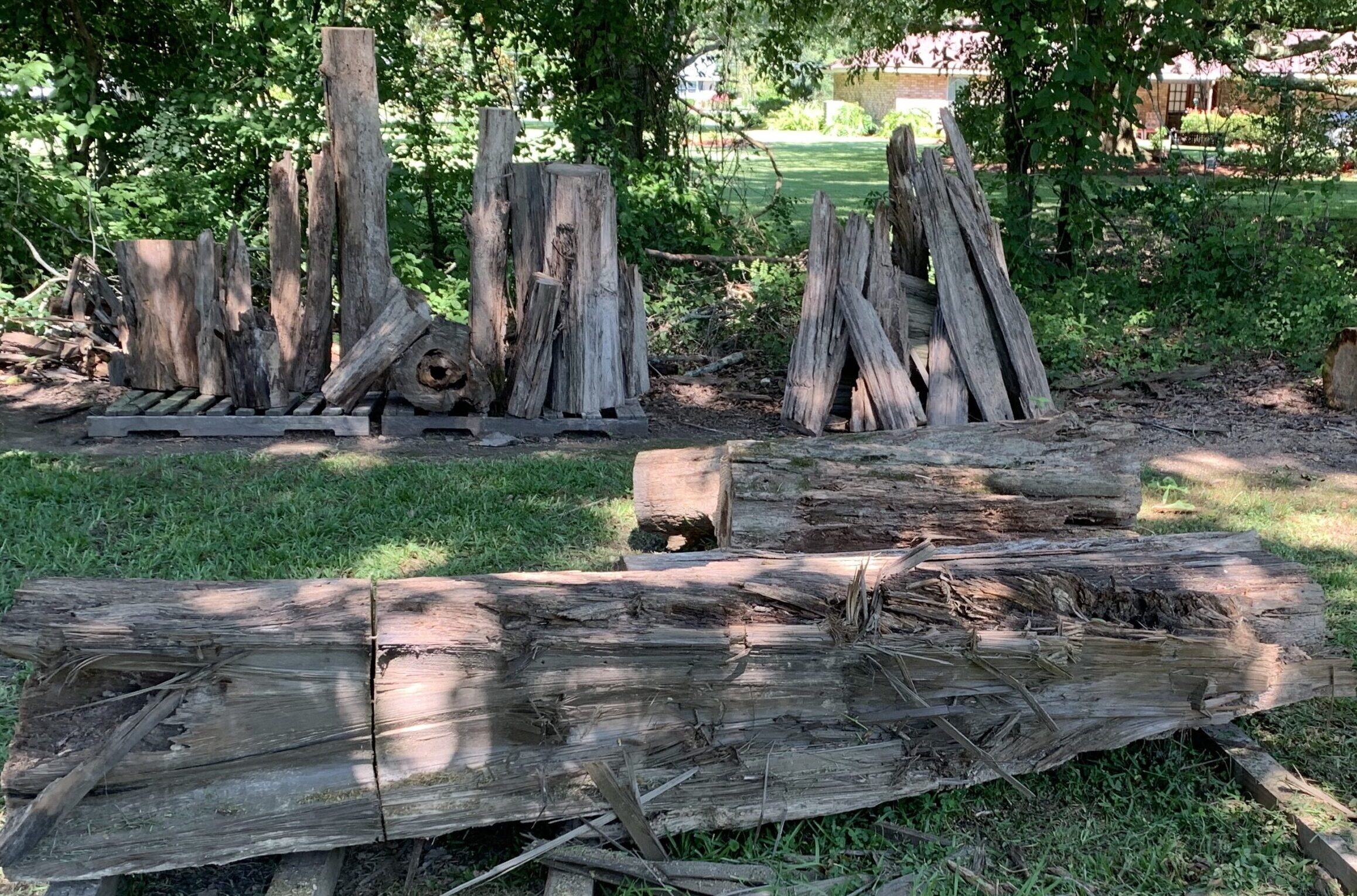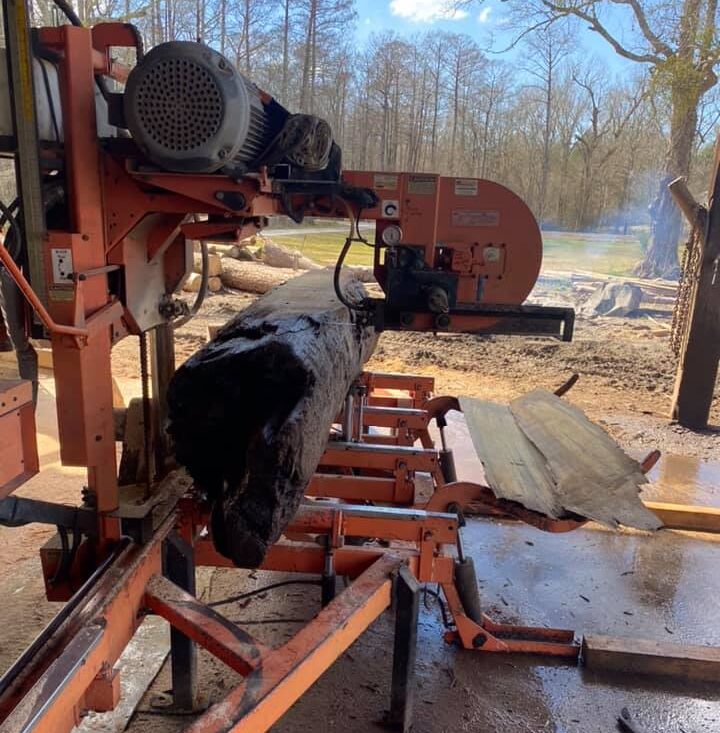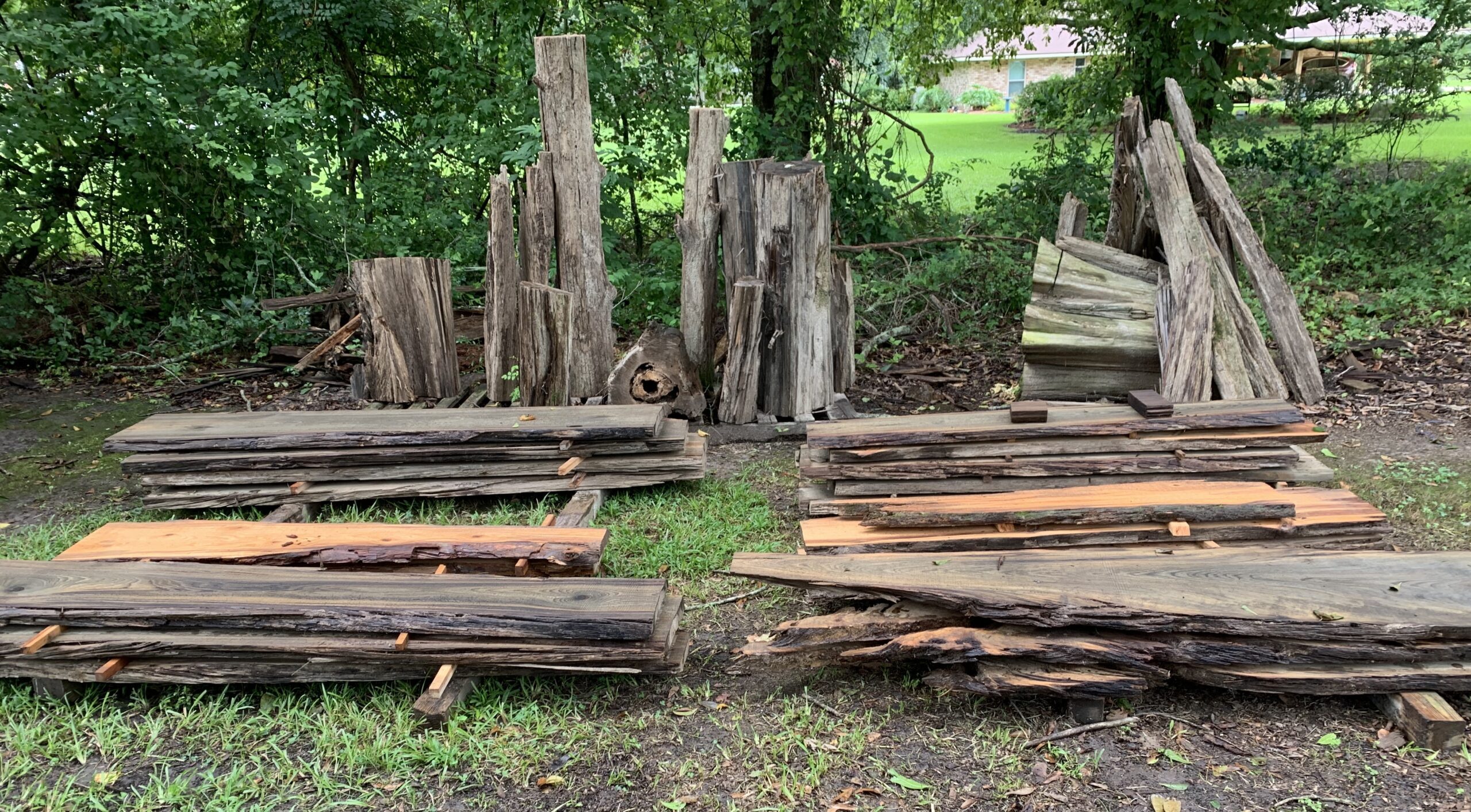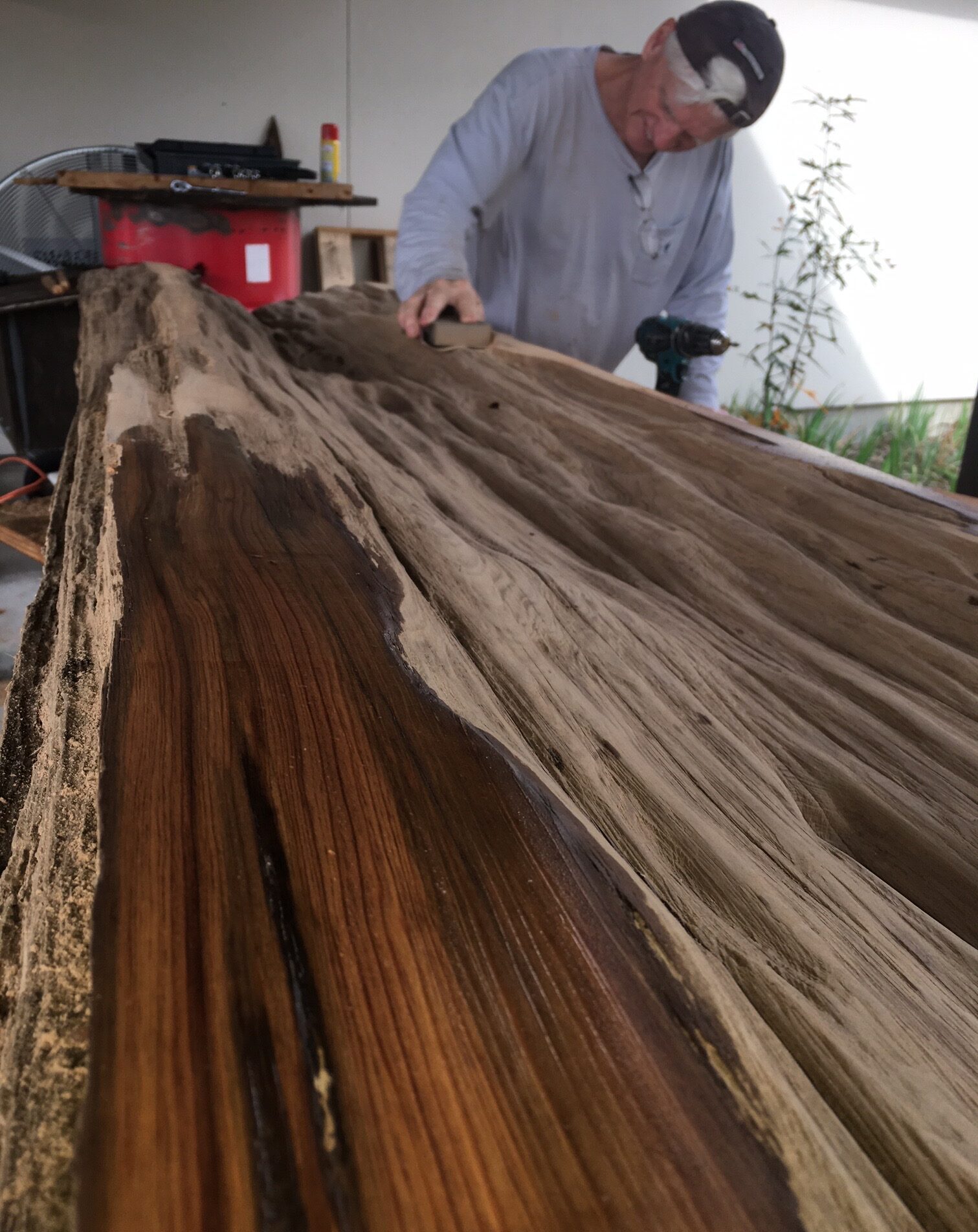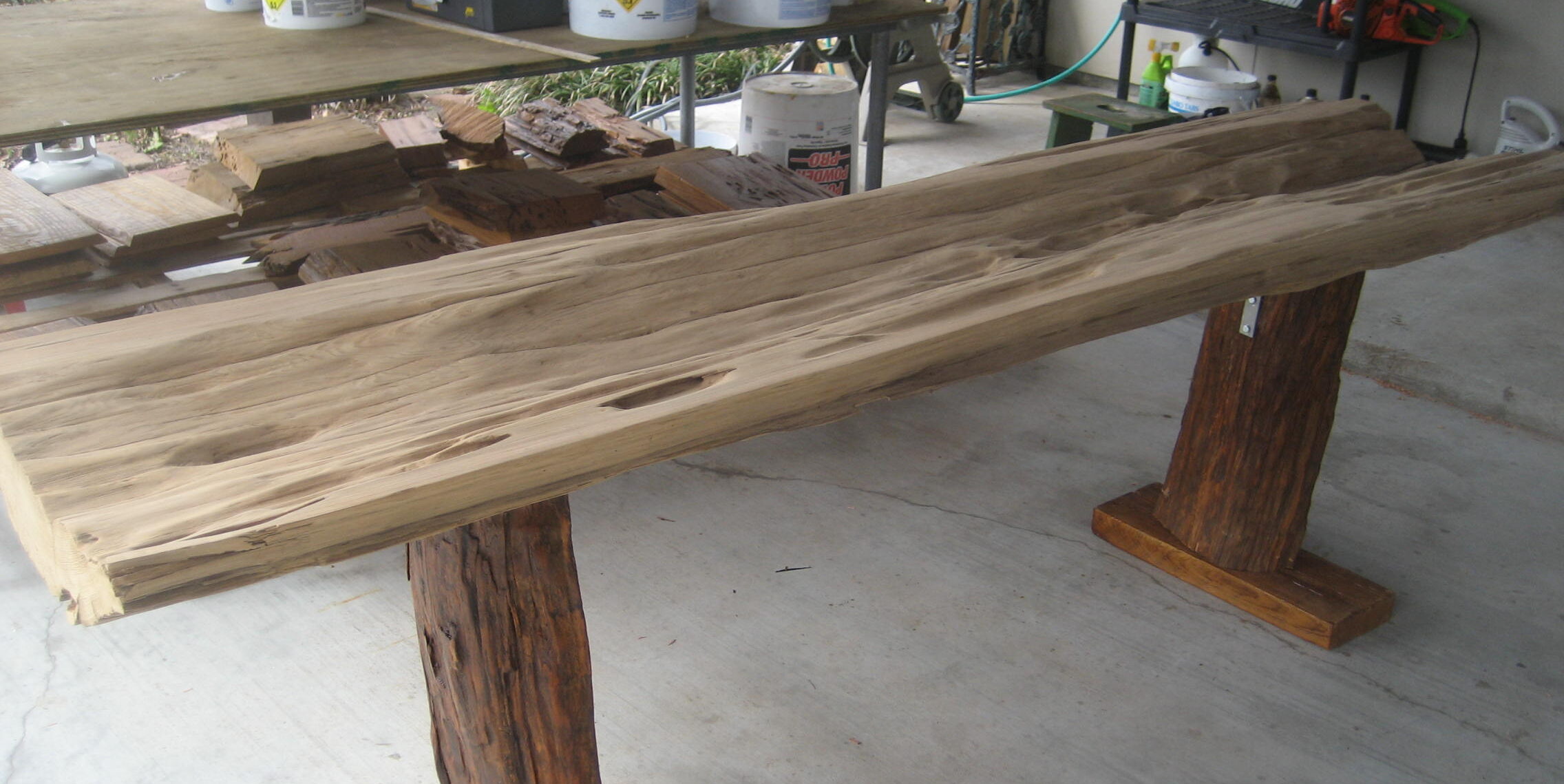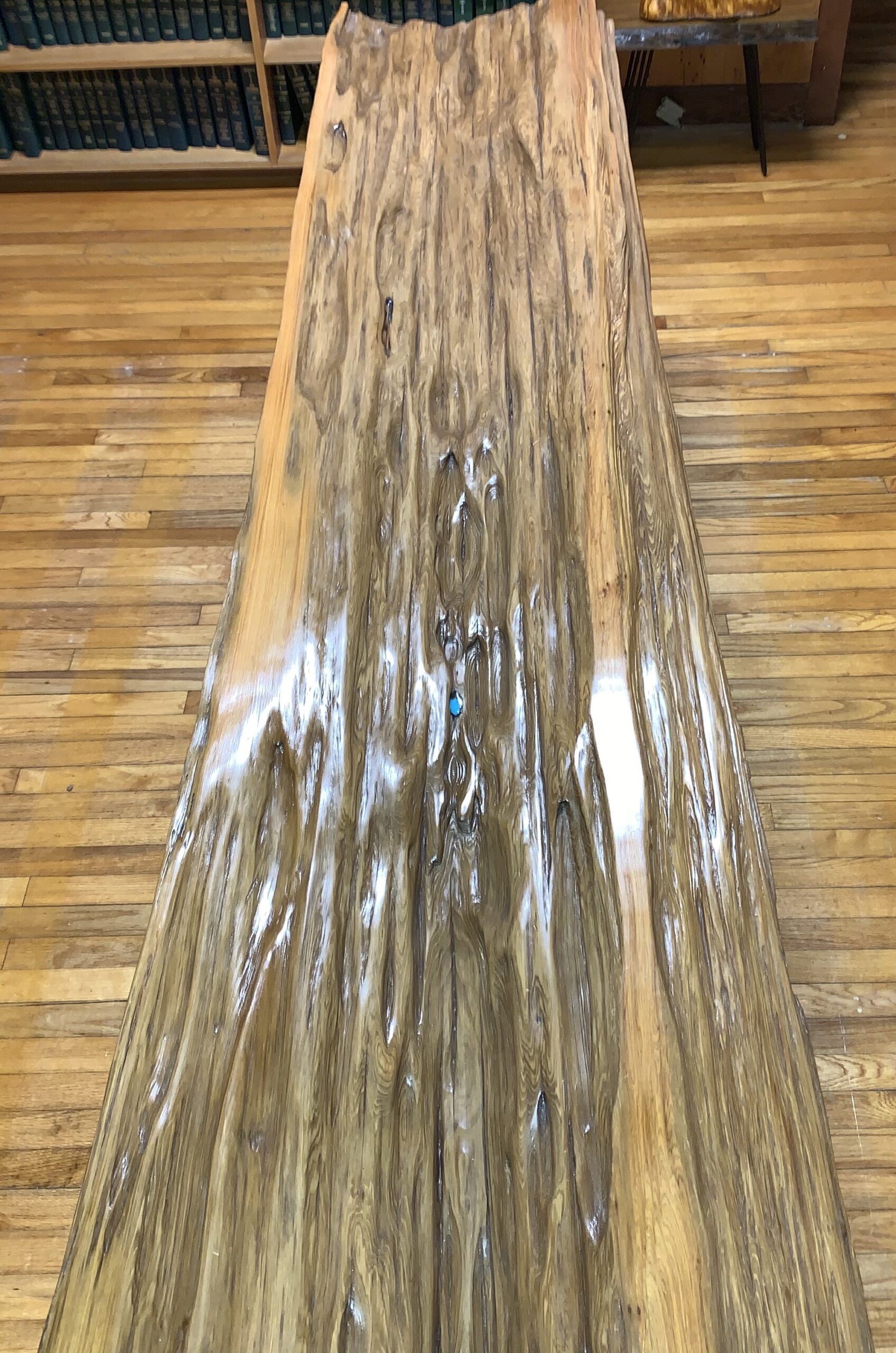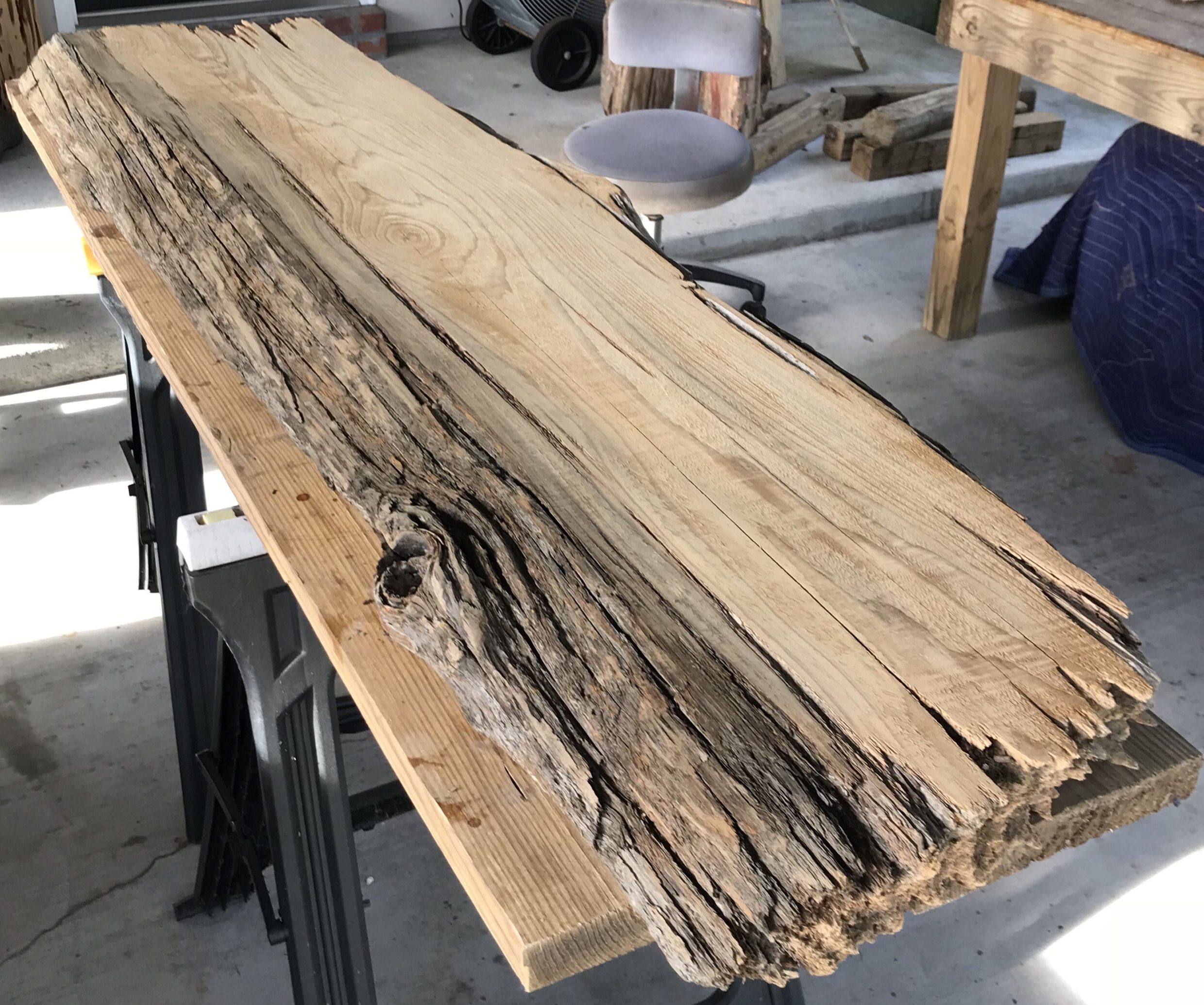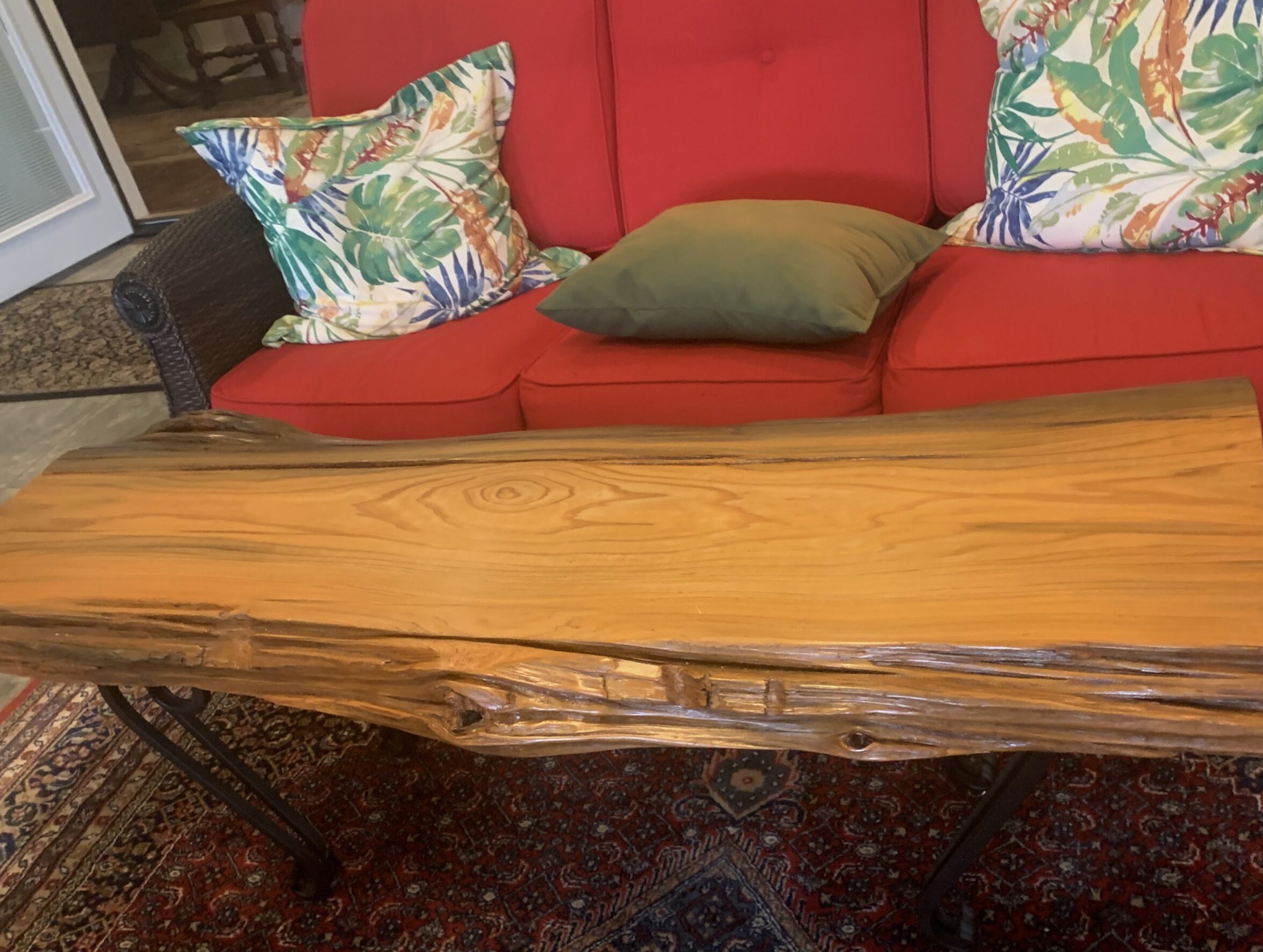Process
The following is a brief explanation of the steps involved to create the pieces.
Cypress Knees
After the knees were cut, they were boiled in water (think crawfish boil) for at least an hour. Due to the buoyancy, weights were used to keep as much of the knee submerged as possible. Immediately after being removed from the pot the bark was scraped off. Because of the size or shape some knees could not be cooked. Those knees were cleaned with a pressure washer. A few knees were cleaned by gradually scraping the bark off over a period of a few months (see Giraffe). A few weeks after a knee was cleaned multiple layers of shellac finish were applied. The delay in applying the finish was to allow moisture to escape from the knee.
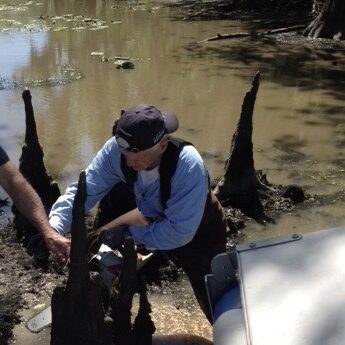
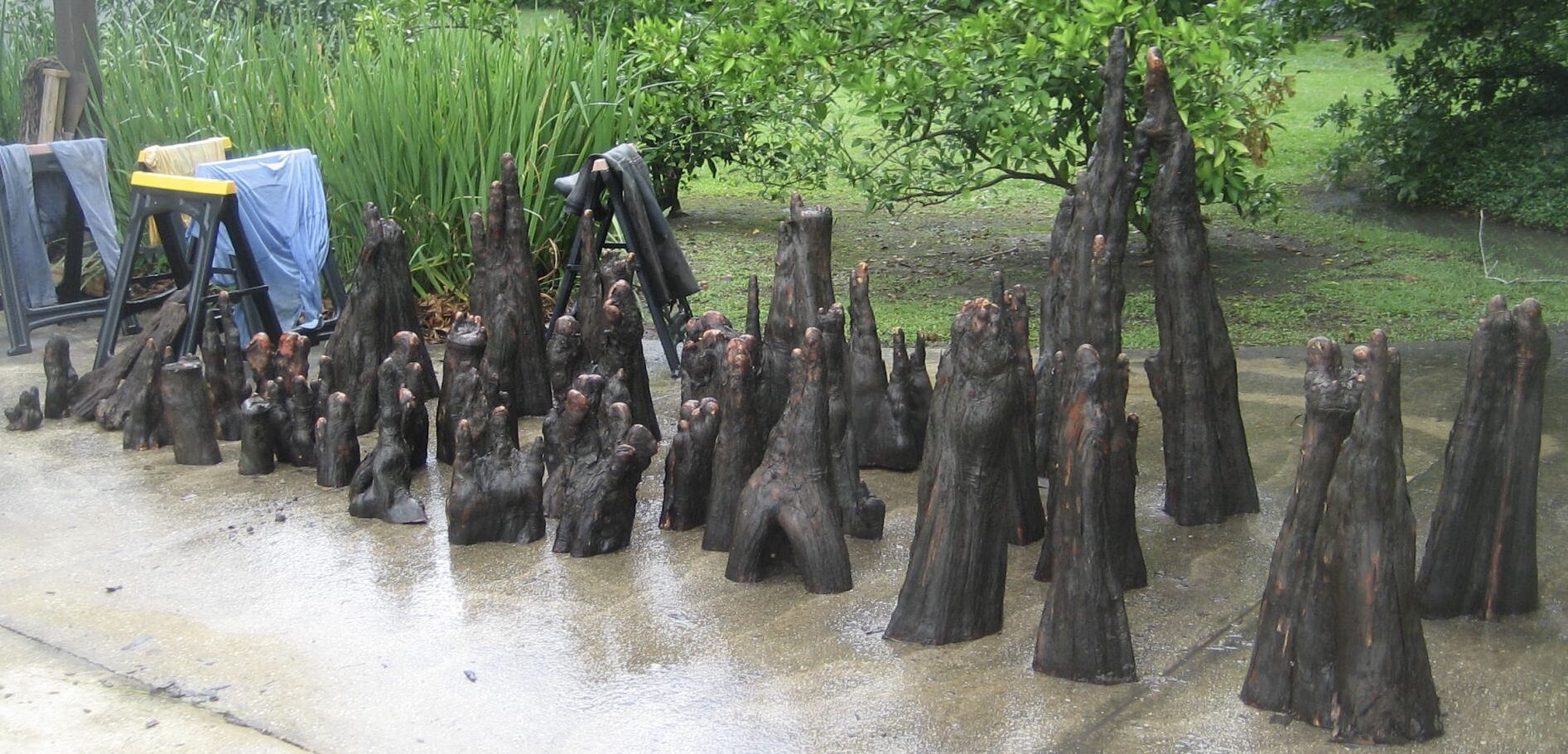
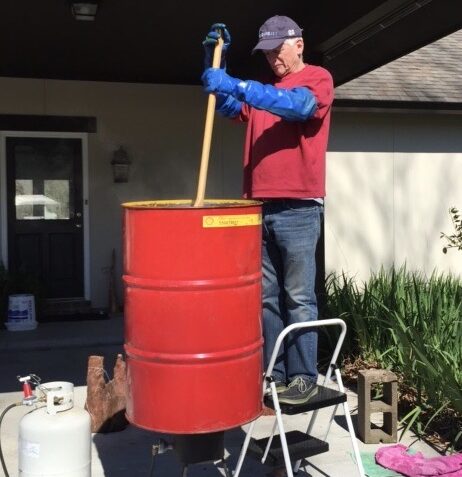
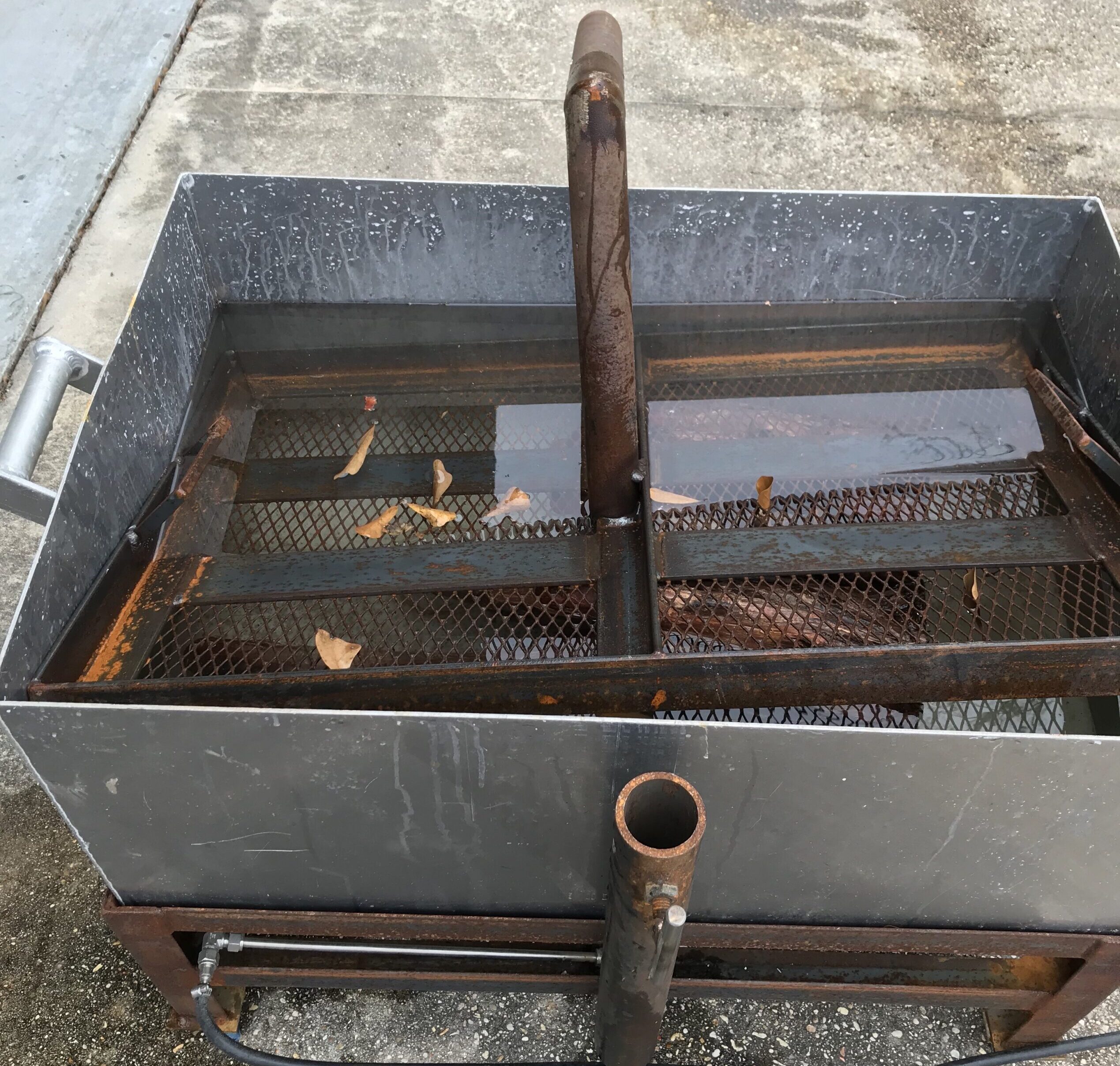
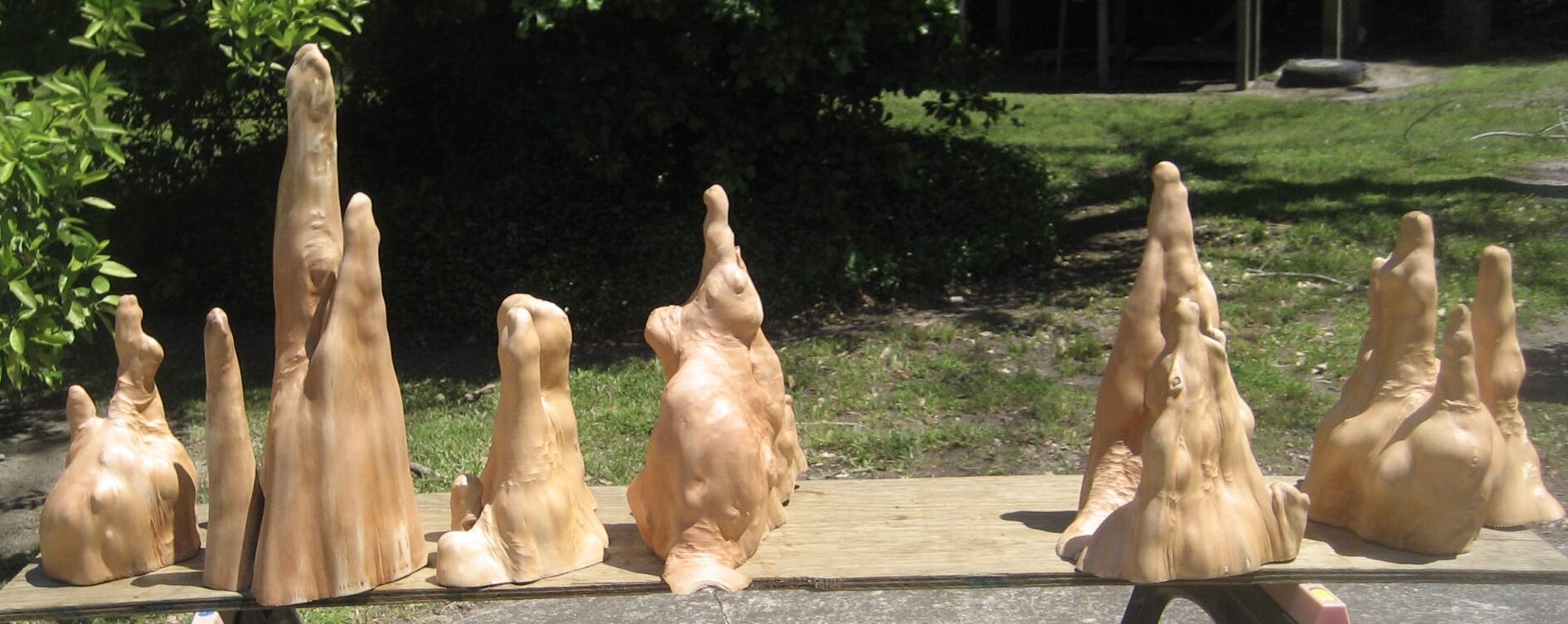
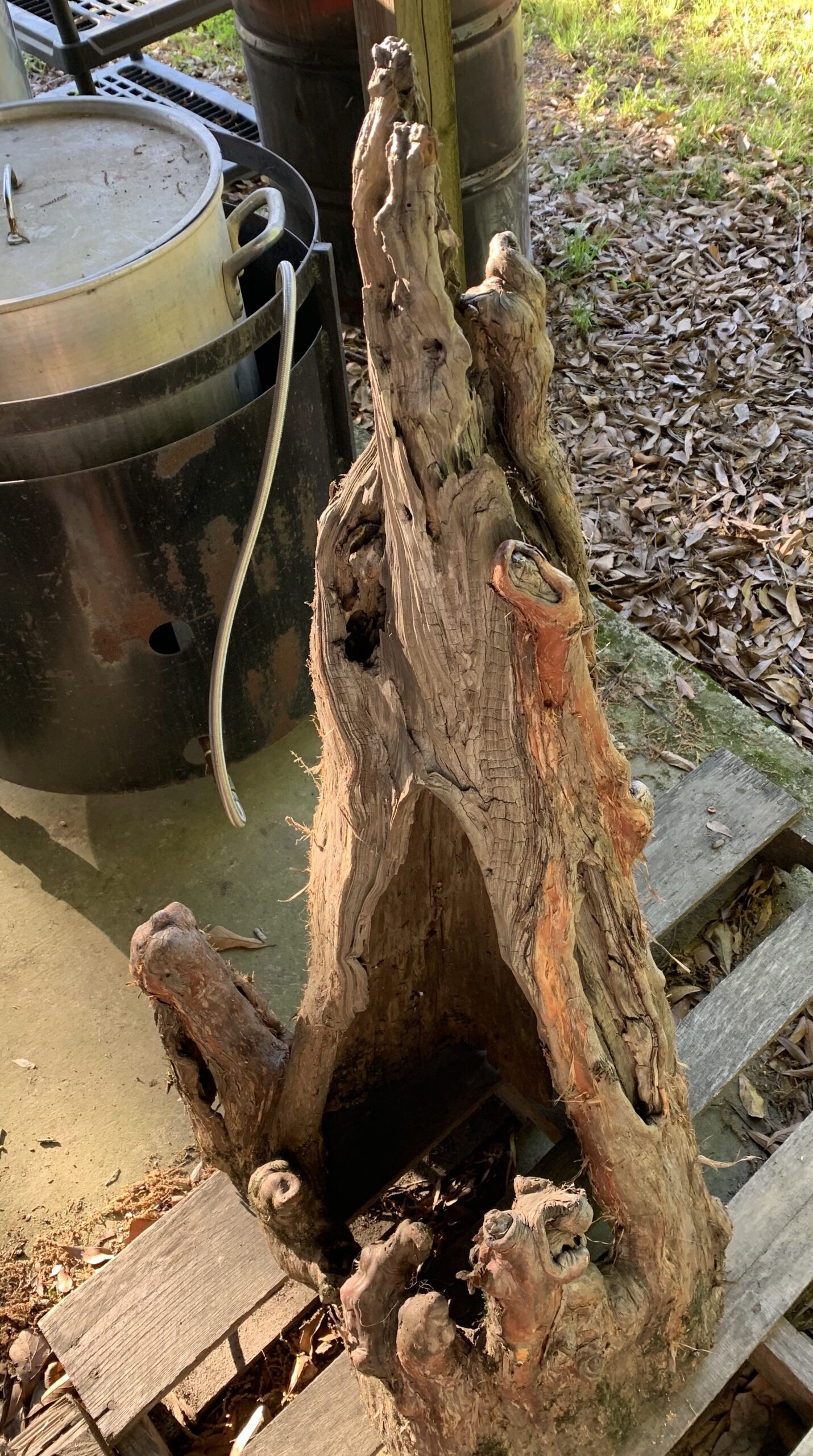
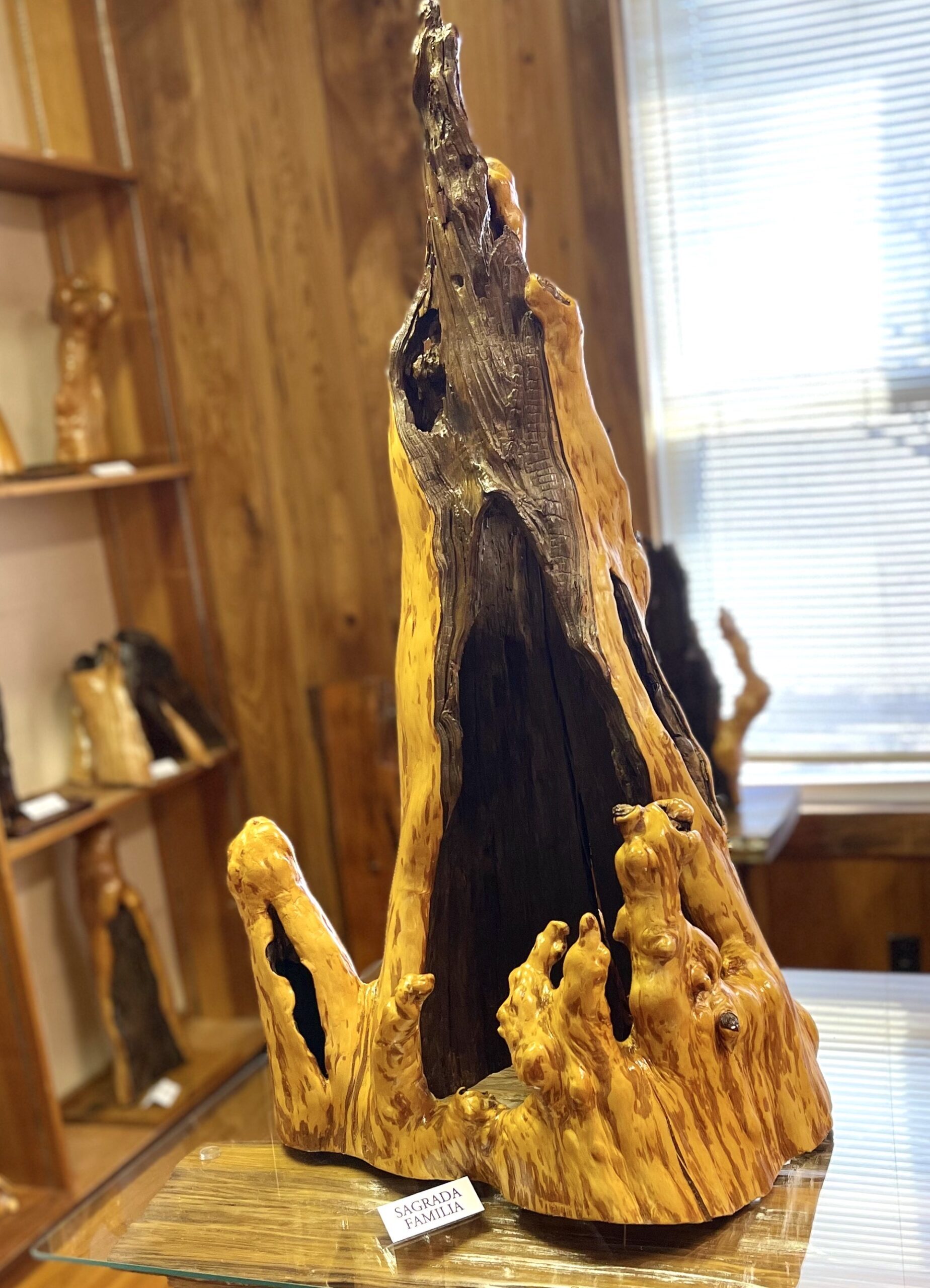
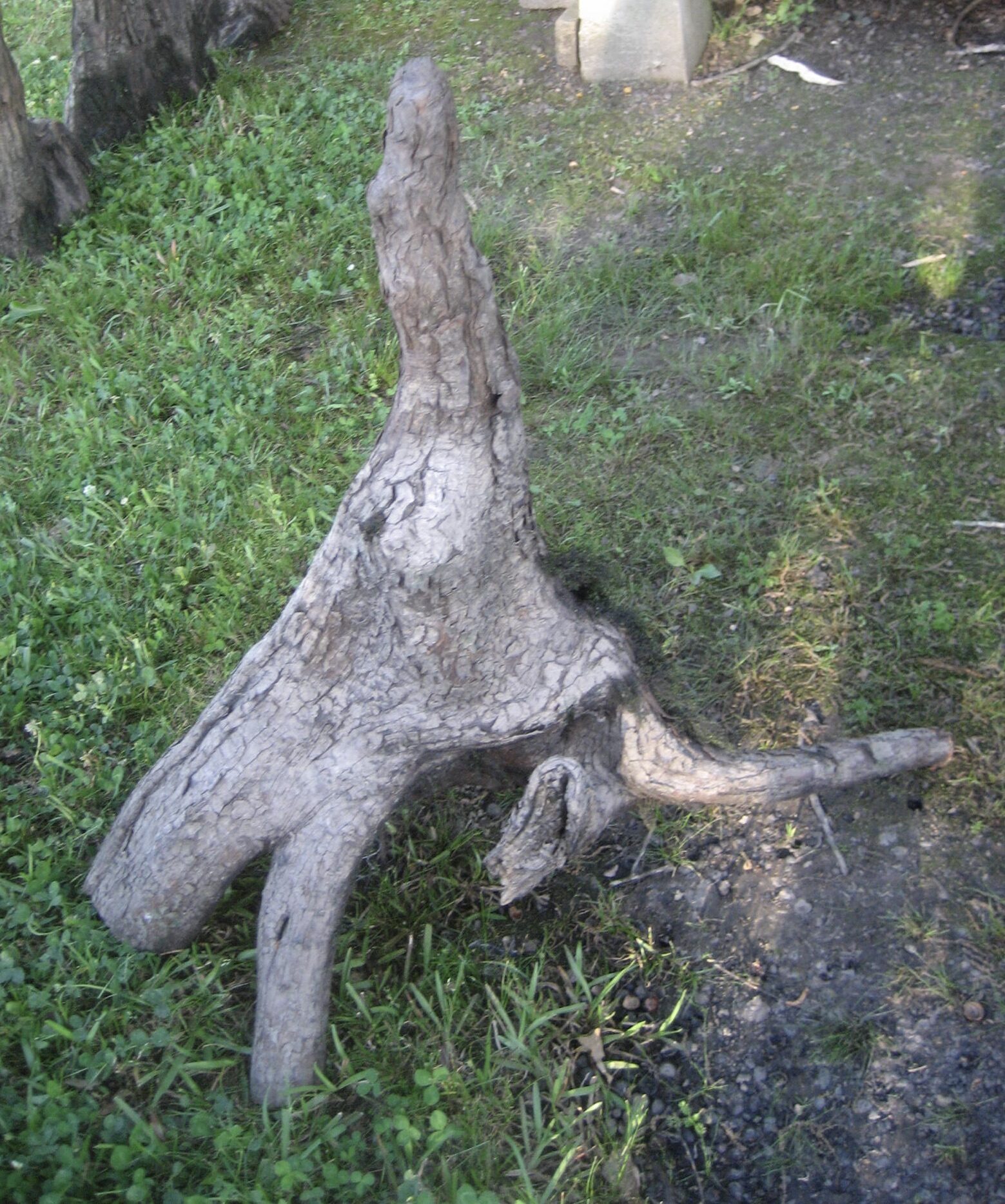
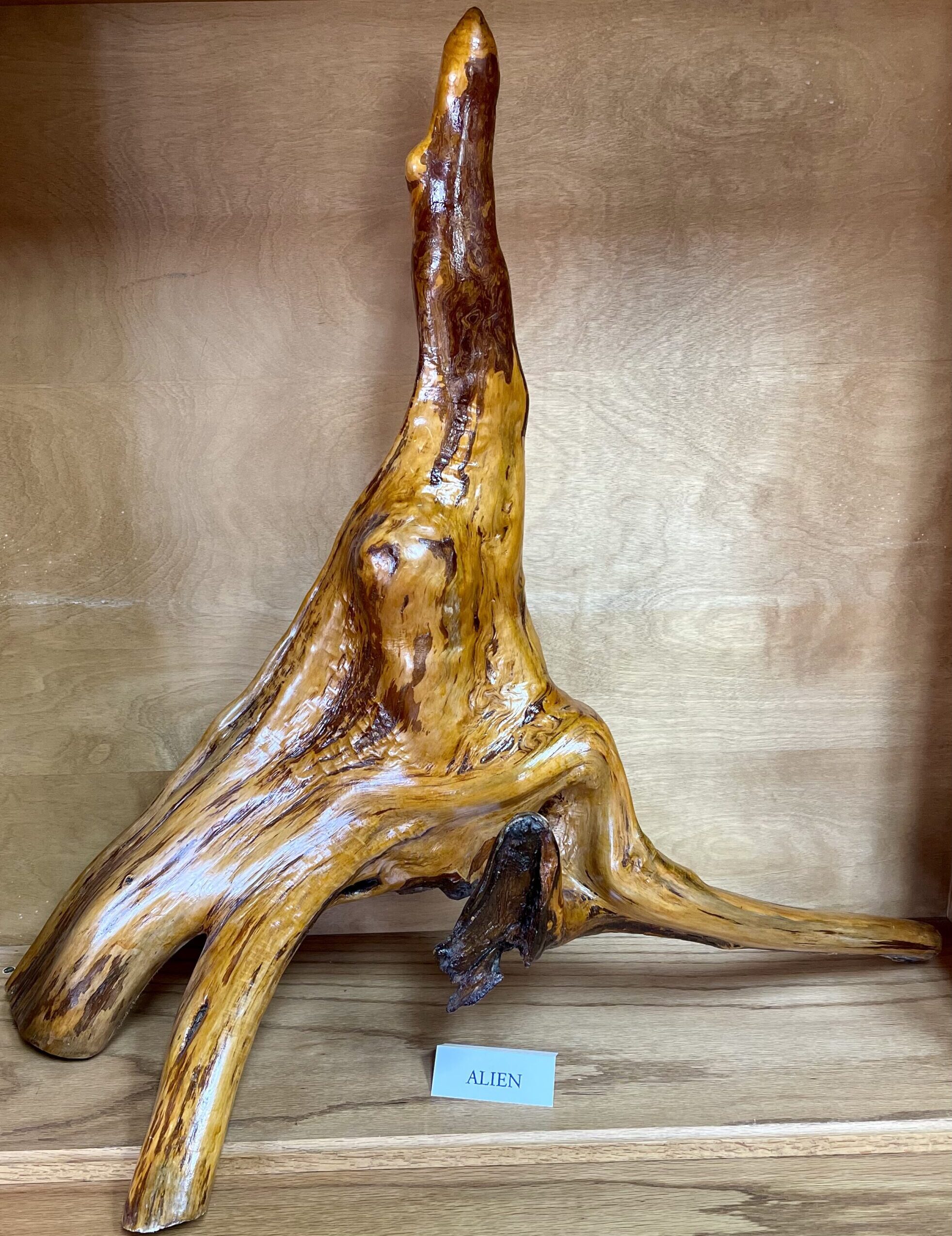
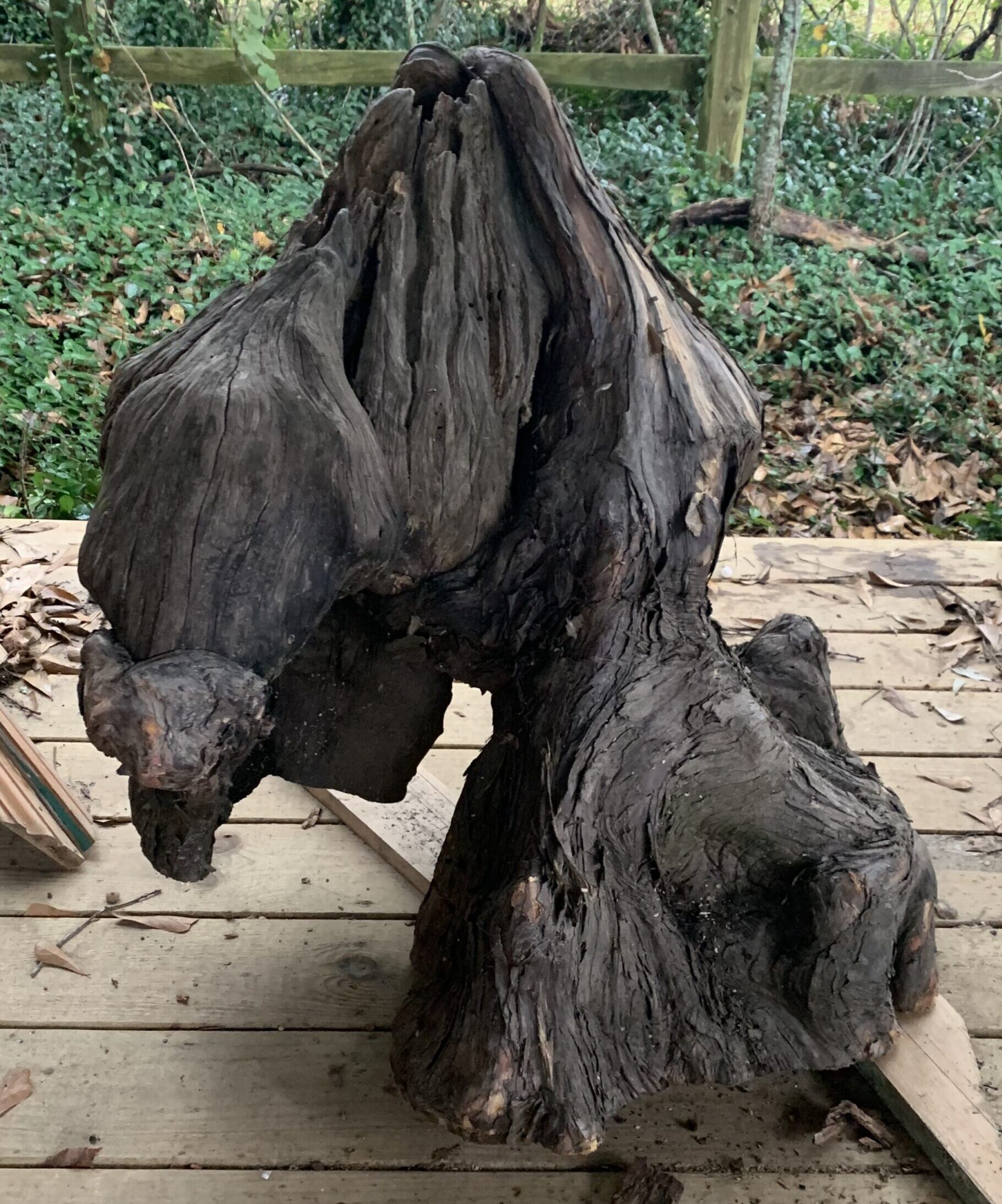
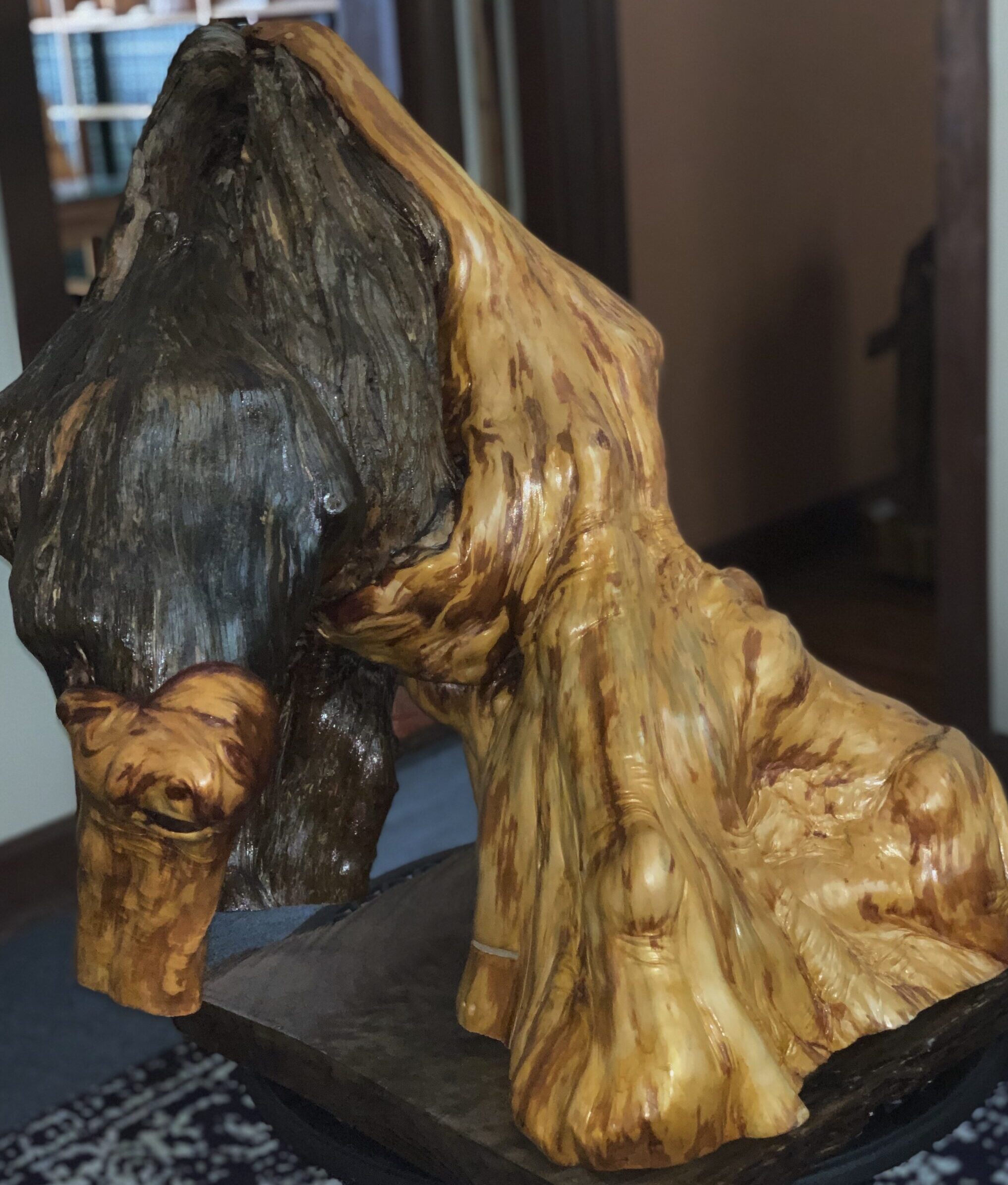
Logs
The table-tops, charcuteries, coasters, bases and slabs were made from logs that had been buried. Initially the logs were caked with mud and or sand. The logs were pressured washed and then milled at the Laurel Ridge Sawmill. The boards were pressured washed again and sanded. With few exceptions, the “live edge” was left on the boards. Multiple coats of shellac were applied. The charcuteries, coasters and some table-tops also have a resin finish. The legs on the tables include hand-forged iron legs, metal hair-pin legs, cypress knees, cypress wood and an old Singer sewing machine.
